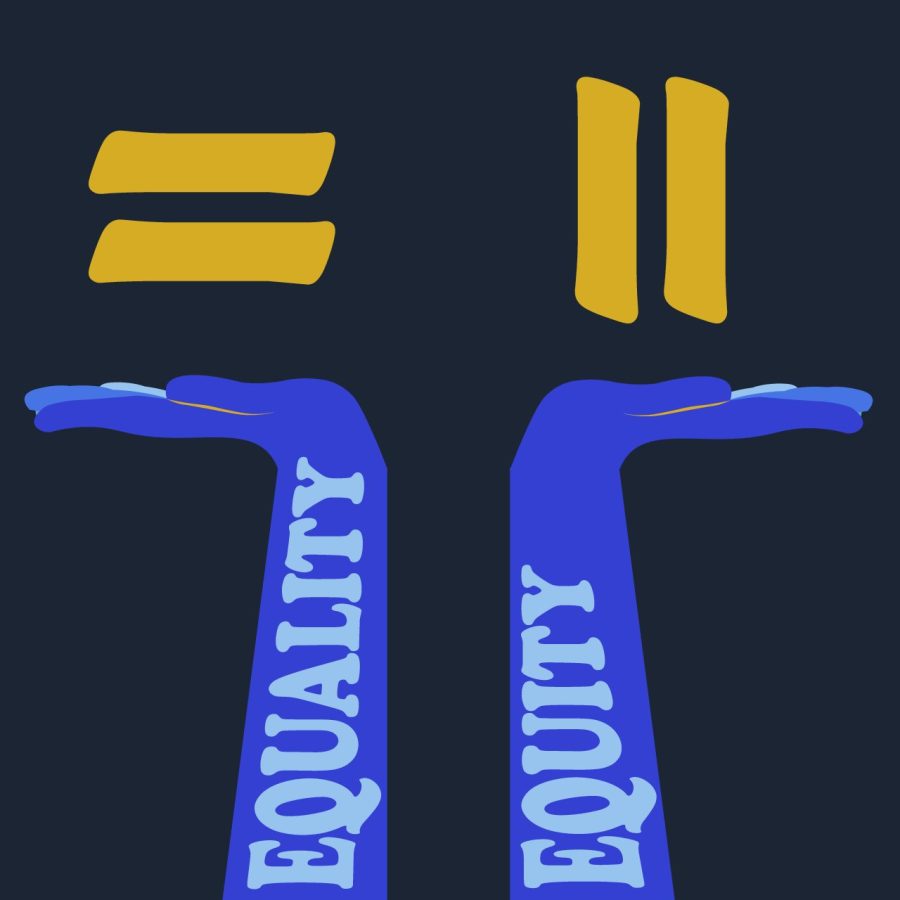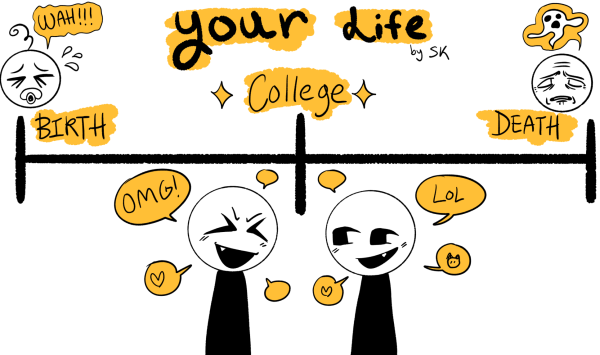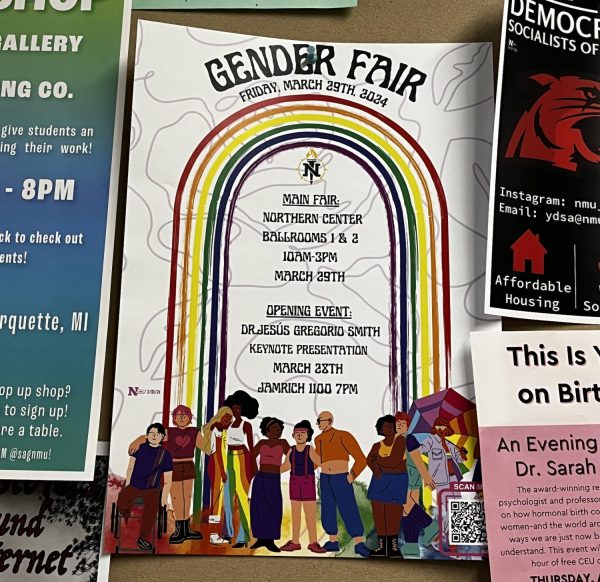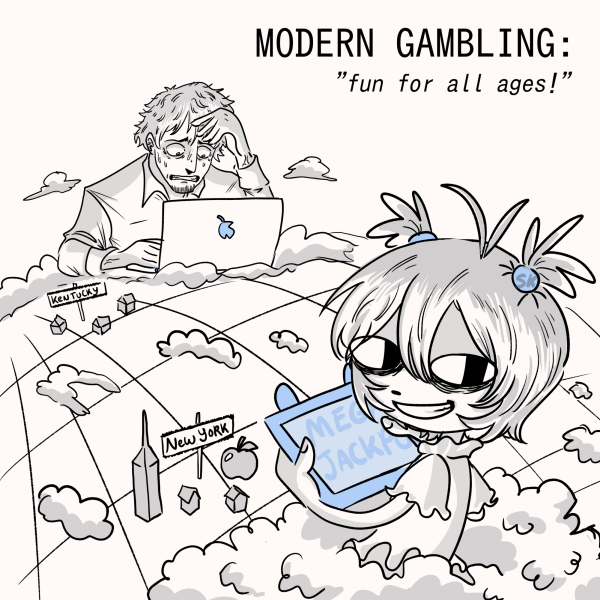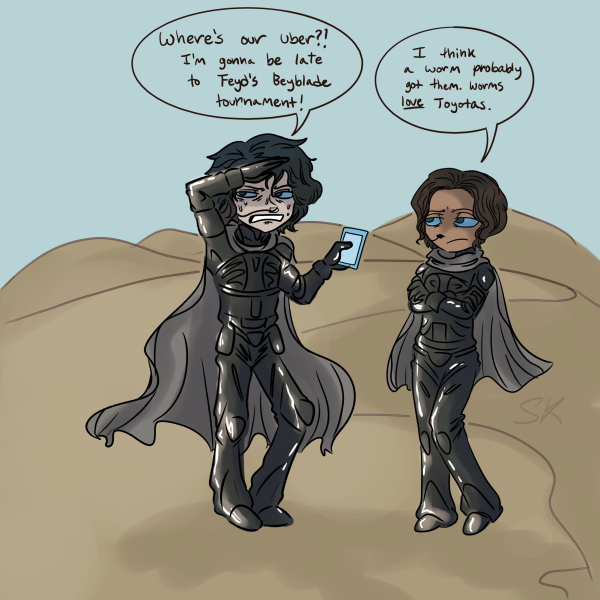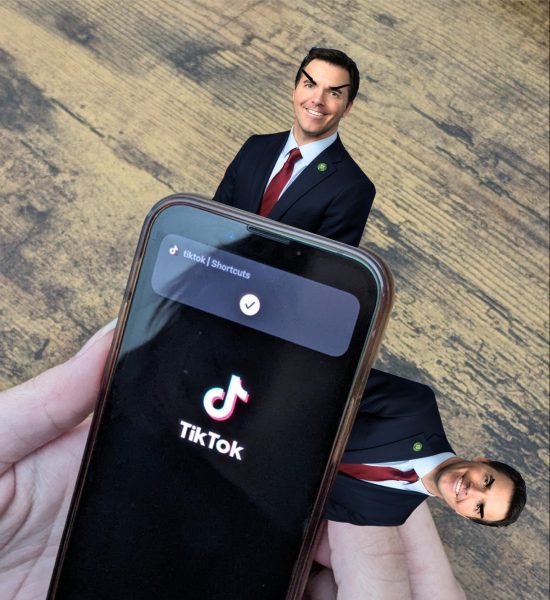Opinion — Equality and equity: What’s the difference?
March 16, 2023
As a political science student at NMU, I have had just about every convoluted vocabulary term in my realm of study thrown at me. From utilitarianism to nihilism, trickle-down economics to political realism, I have heard and been forced to understand all of it.
While it may seem like a lot to take in, it has been relatively simple to differentiate between these philosophical terms. Most differ drastically, and some were even developed to contradict one another directly.
Based on the observations I have made in my three years of undergraduate studies, however, there are two words that have been frequently misused: equality and equity. The misunderstanding of these two words extends beyond the classroom they are being taught in. I have read Facebook posts, listened to speeches and even had professors misuse the words regularly.
The mistake, however, is common and quite understandable. The two words are so close in spelling and often used in the same contexts that it would make sense for those looking to spice up their vocabulary to interchange the two without knowing the ramifications of doing so.
Because these words are being used more frequently in mainstream media, especially in political commentary, I will do my best to explain equality and equity in laymen’s terms using my background in political science.
But before we get to equality and equity, we must first understand the term inequality.
Inequality seems to be a pretty straightforward term. It quite literally means “not equal.” In the political realm, the word inequality is used to describe unequal access to social, economic and educational opportunities in society.
For instance, an individual has more food than is needed to provide sustenance, while another individual does not have enough food to survive. This is inequality. The reason for the large disparity may vary, for factors like geographical location, financial stability and cultural practices can affect this. This is our reality, both nationally and globally.
So how do we “fix” inequality?
You would be wrong in assuming that the antithesis to inequality, equality, is the answer to our societal problem. If we were to employ equality, meaning everyone is distributed the same amount of goods (whether it be food, clothing or tools), we are overlooking the fact that some individuals may need more support than others. While equality in this sense is “equal treatment,” it is a gross oversimplification when trying to understand basic human needs.
Besides the tyrannical leaders, there is a reason communism (a political theory in which all property is publicly owned, and everyone is employed based on their abilities and paid by their needs) has failed when practiced in the real world. Leaders like Joseph Stalin failed to realize that people need to be cared for based on their needs and abilities, which is something Karl Marx stressed when developing his political theory.
At this point, you may be wondering if it is even possible to “fix” inequality. Don’t fret! There is some hope, and it comes from understanding the definition of equity.
Taking into consideration the different needs and abilities of individuals, equity is the practice of distributing the specific support someone needs. A common model used to demonstrate this is as follows:
Three individuals are watching a football game behind a fence. One person is tall enough to see over the fence, another can see over the fence if they stand on their tiptoes and the third cannot see over the fence at all. If we were to employ equality, all three of the individuals would be given the same size box to stand on so they could see.
These boxes, however, do not address the issue. The individual who could already see over the fence is just given a boost. The individual who was standing on their tiptoes can now see clearly, but the individual who could not see at all was not given a big enough box to see over the fence.
Just because everyone was afforded the same support does not mean the outcome will be the same for each.
If employing equity, each individual would be given a specific box based on the height needed to see over the fence. The individual who could already see would be given nothing, while the other two would be given different-sized boxes to accommodate their needs. Only those who need support in this situation would receive it.
This example illustrates that there is a big difference between equality and equity, but what if I told you that the answer to our inequality issue cannot be solved by these two terms?
The solution to our systemic issue is justice. Justice is a very broad concept in American society. What is deemed just and unjust depends on a variety of factors, including who the involved parties are and the correct application of the law. But if we were to boil the term down, justice is the concerted effort to address and solve systemic issues at their core.
Refer back to the three individuals watching a football game over the fence. Rather than fussing over box sizes and everyone being afforded some form of support, why not just take the fence down? The fence is the root of the issue, not the boxes or the individuals’ heights.
Therefore, justice is fixing the societal issue, whatever it may be, to offer all individuals equal access and opportunities based on their specific needs. While this is an oversimplification of the concept, it gets the point across.
It sounds easy when written down. As you can imagine, justice is not easy to come by. All social movements in American history that resulted in some overarching societal change saw the shedding of blood, sweat and tears. But when the cause is just, it will prevail.
Editor’s Note: The North Wind is committed to offering a free and open public forum of ideas, publishing a wide range of viewpoints to accurately represent the NMU student body. This is a staff column, written by an employee of the North Wind. As such, it expresses the personal opinions of the individual writer, and does not necessarily reflect the position of the North Wind Editorial Board.





















